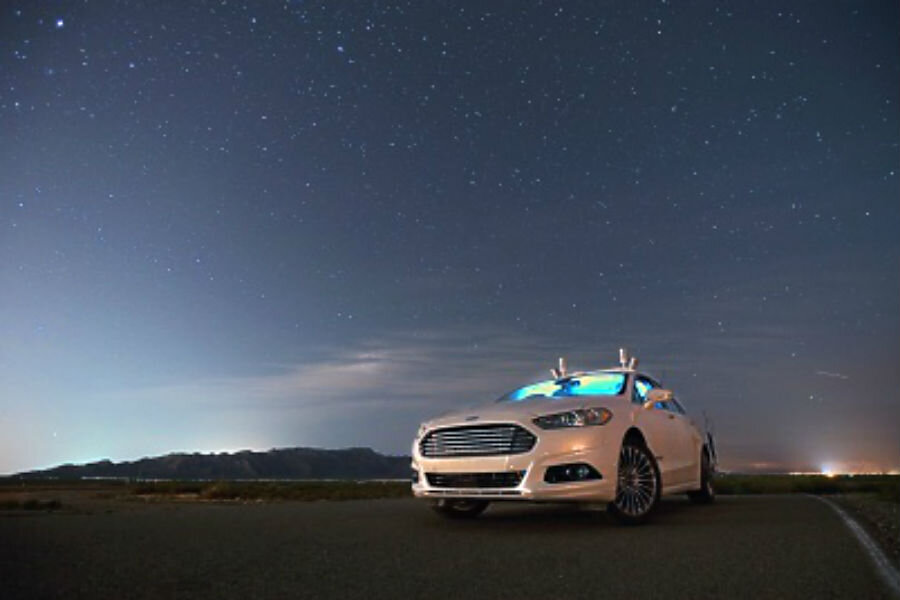How this Ford Fusion navigates the dark without driver – or headlights
Loading...
There is a lot of talk that autonomous cars could drive more safely than a human could, and Ford Motors has just taken a substantial step toward proving it.
Autonomous cars normally rely on cameras and radar to guide themselves. At the same time, efforts in the United States to improve road safety have centered around fitting cars with more automated hazard prevention features, including better headlights. Now Ford has demonstrated that its new autonomous prototype can drive without headlights or an active driver.
How? By using 2.8 million laser pulses per second.
Ford engineers recently ran a test at the company's Arizona proving grounds where they sent a self-driving Fusion Hybrid along an unlit, winding desert road at midnight, using a technology called LiDAR (light detection and ranging), which uses light that bounces off objects to develop a detailed model of an environment. The laser pulses allow the car to orient itself by comparing its position to detailed 3D maps that included topography, road markings, and landmarks such as signs, buildings, and trees, according to Digital Trends.
"Thanks to LiDAR, the test cars aren't reliant on the sun shining, nor cameras detecting painted white lines on the asphalt," says Jim McBride, Ford's technical leader for autonomous vehicles. "In fact, LiDAR allows autonomous cars to drive just as well in the dark as they do in the light of day."
The engineers tracked the car's movement both in and outside the car using night-vision goggles. To those outside the car, the laser pulses take the form of a grid around the car.
Wayne Williams, a Ford researcher and engineer, described his experience in a statement from the company.
"Inside the car, I could feel it moving, but when I looked out the window, I only saw darkness," Mr. Williams said. "As I rode in the back seat, I was following the car's progression in real time using computer monitoring. Sure enough, it stayed precisely on track along those winding roads."
Although autonomous vehicles have yet to hit the consumer market, the LiDAR demonstration adds to the growing improvements in auto safety technology. This has included a push to improve the quality of quality of headlights after they were highlighted as a potential reason for the bulk of crashes at night or in dawn or dusk conditions.
While motor vehicle accidents remain a leading cause of death in the US, NHTSA figures from 2013 showed traffic deaths have fallen by nearly a quarter between 2004 and 2014, The Monitor reported. The NHTSA numbers also showed safety improvements in vehicles are responsible for at least part of that decline, experts say.
Ford, which has proven to be a leading innovator when it comes to automated cars, is rumored to be in talks with Google. The tech company is already testing its own automated cars and wants to get into the commercial car business, Digital Trends reported. Neither company has confirmed a planned alliance, however.








